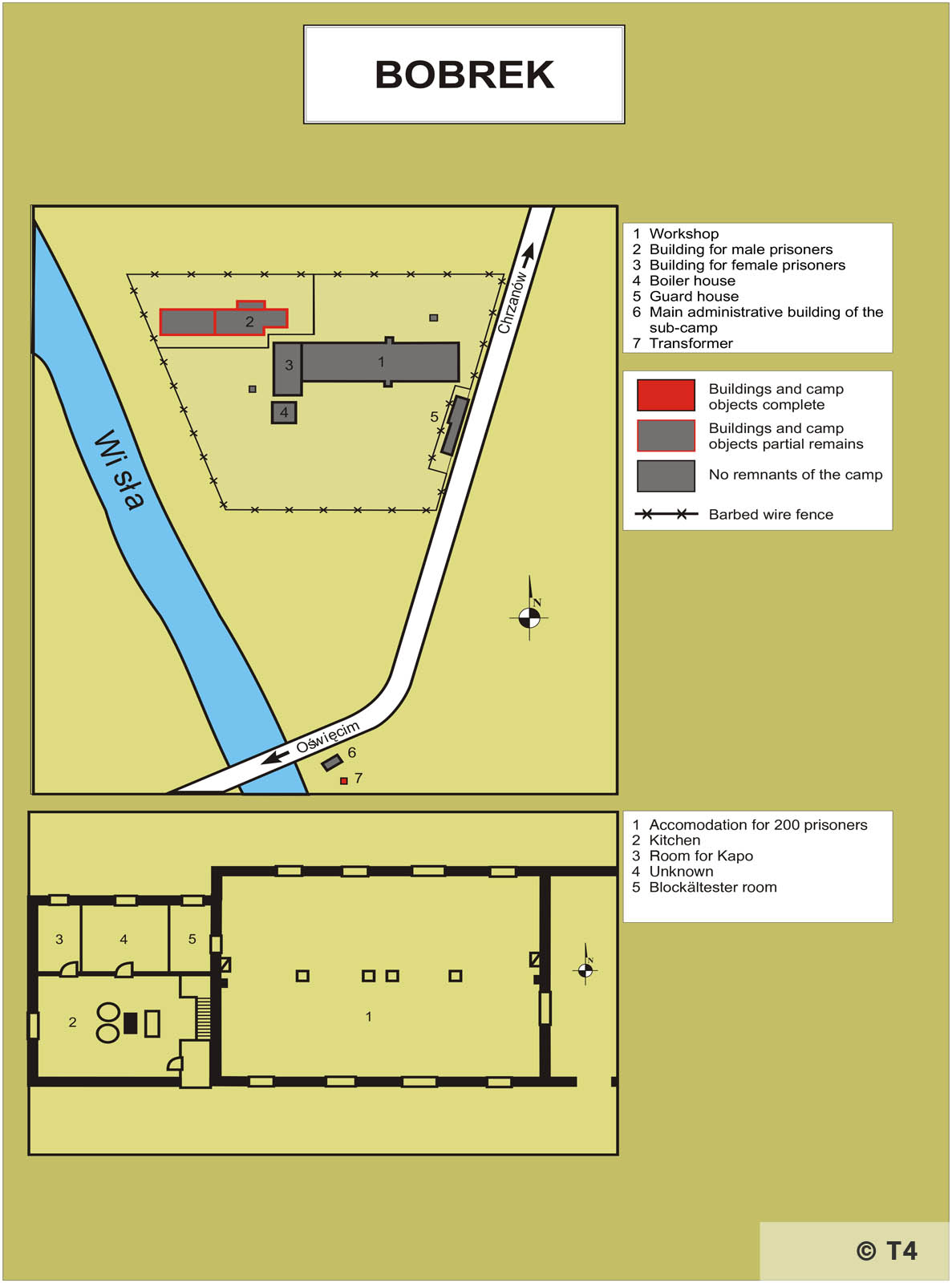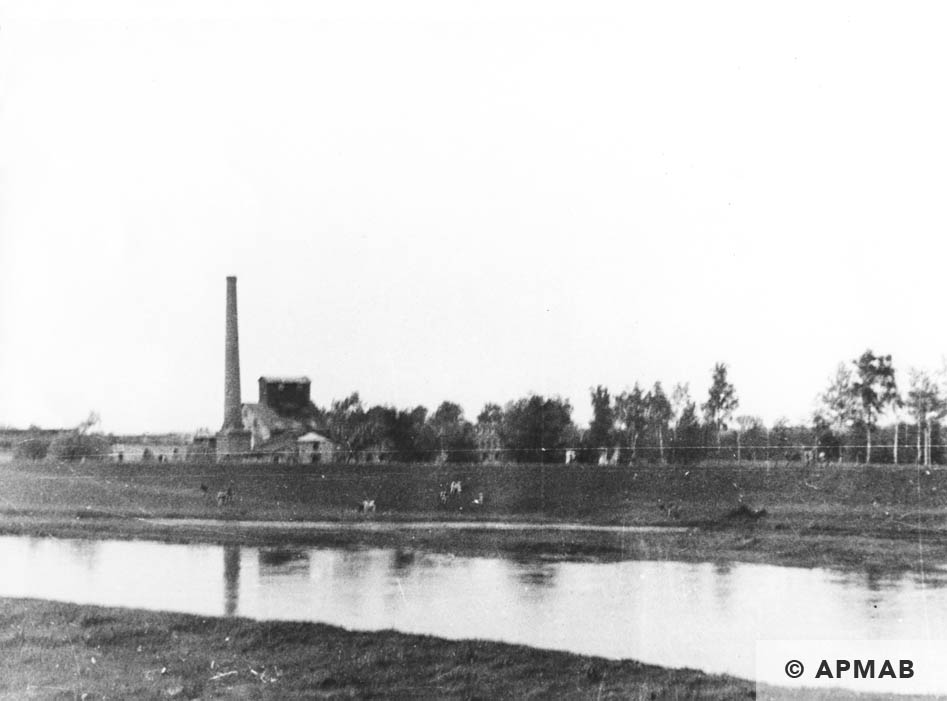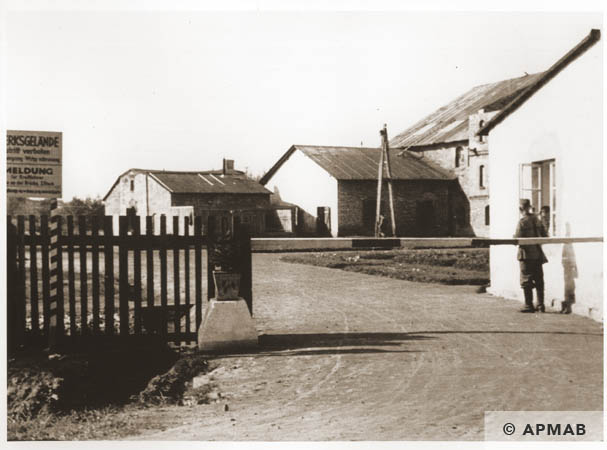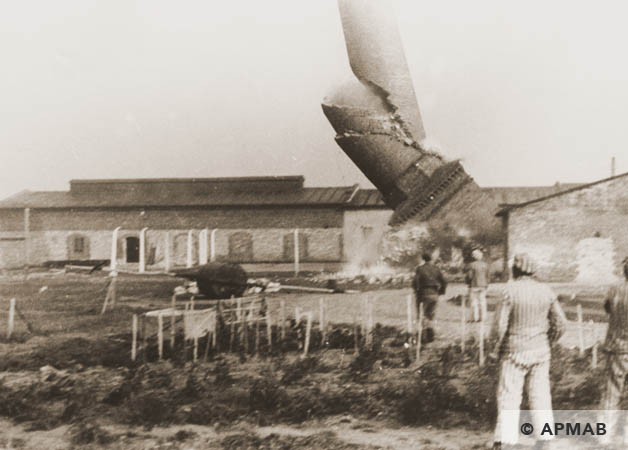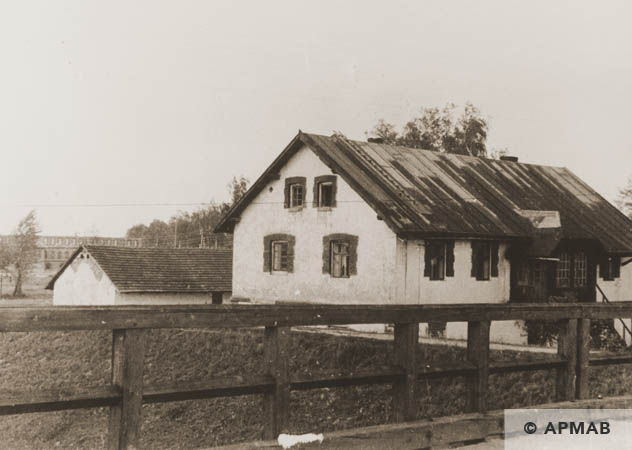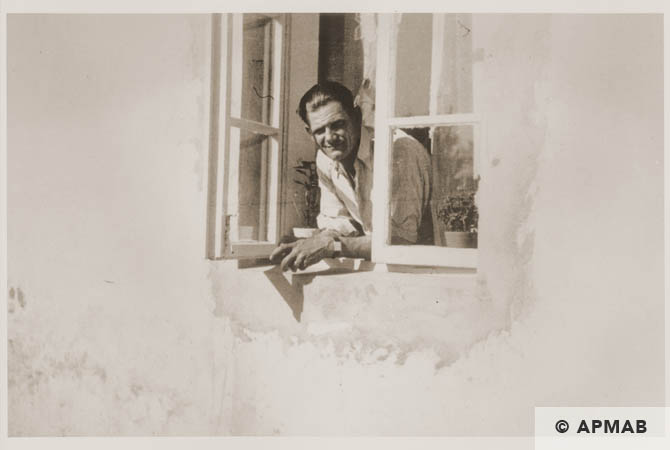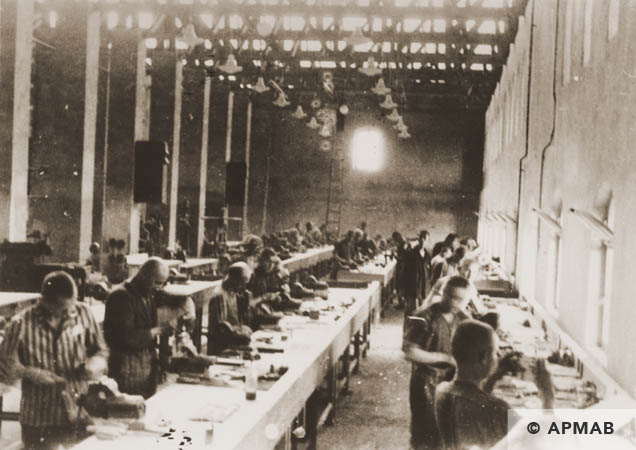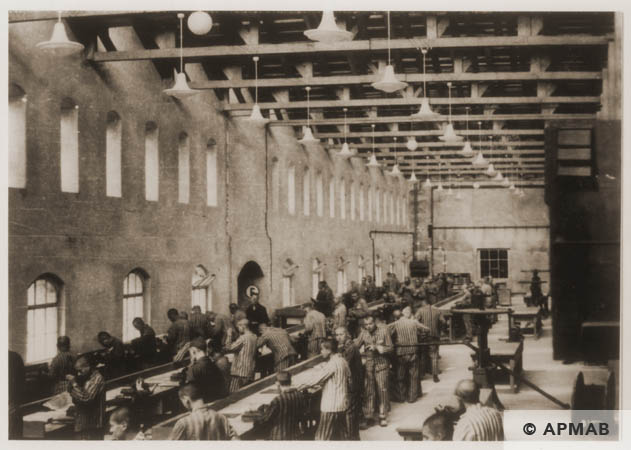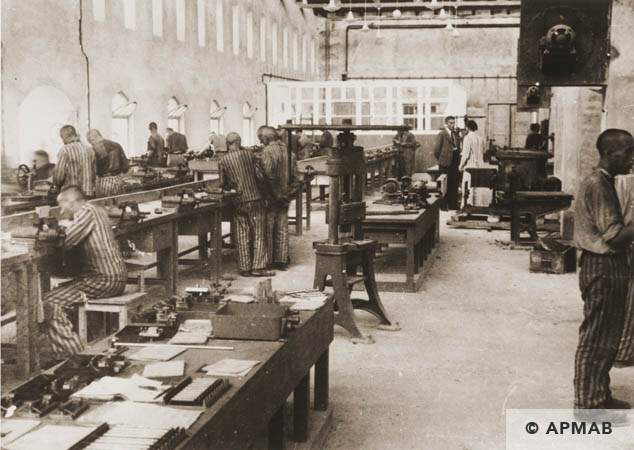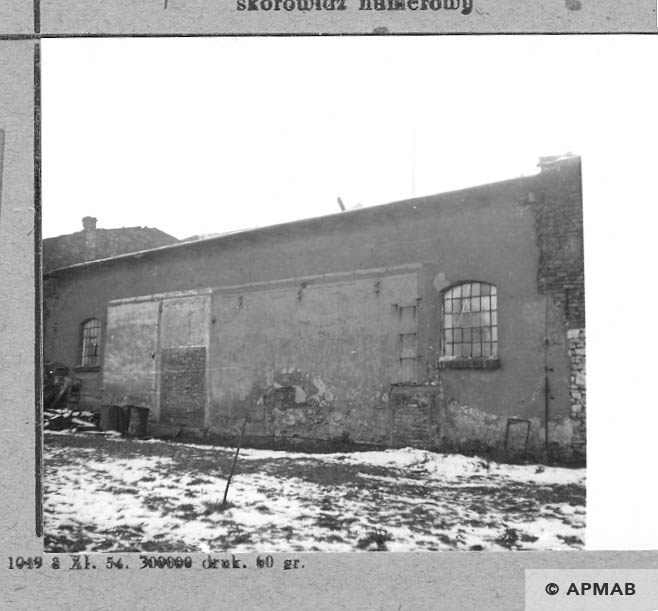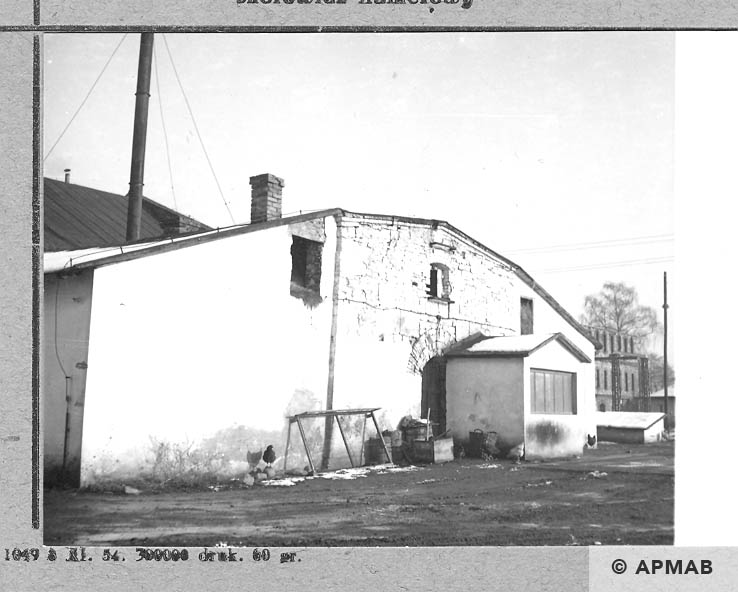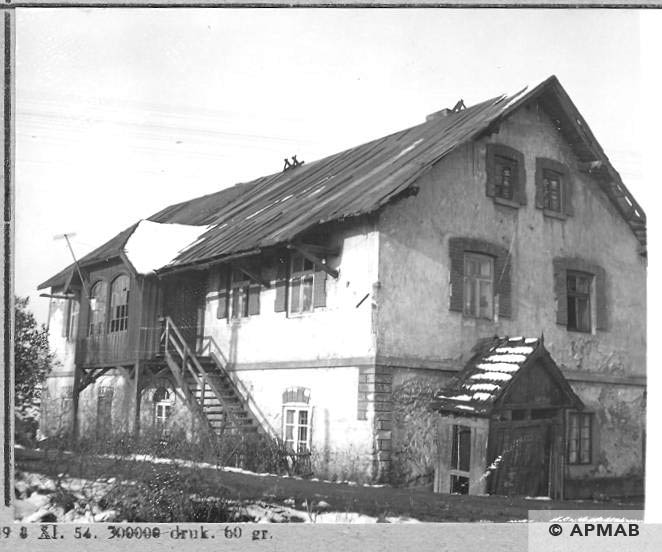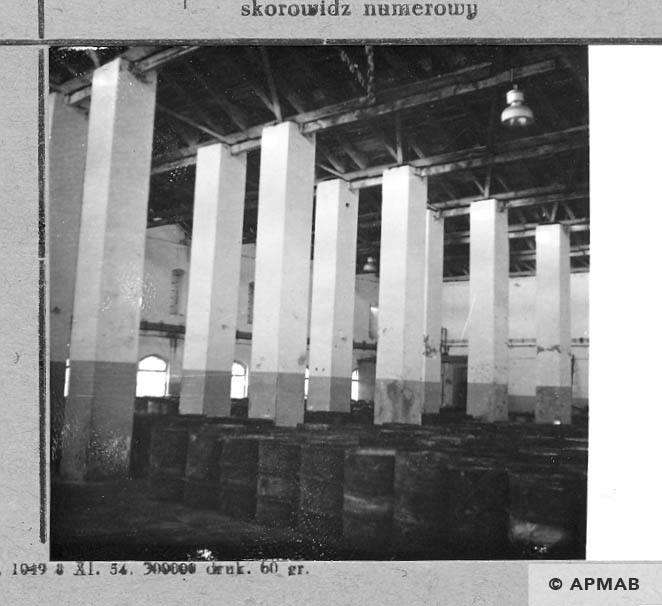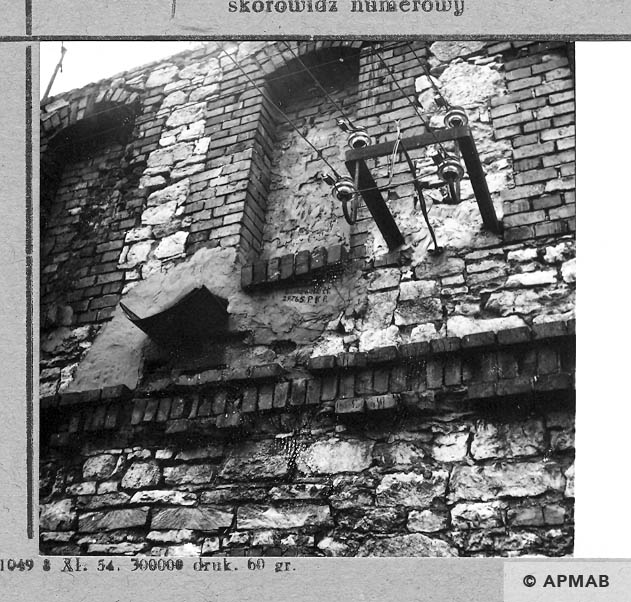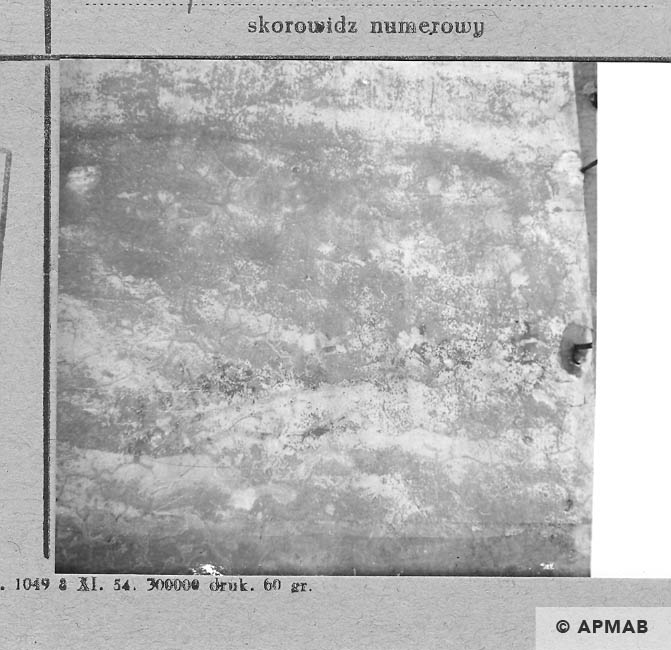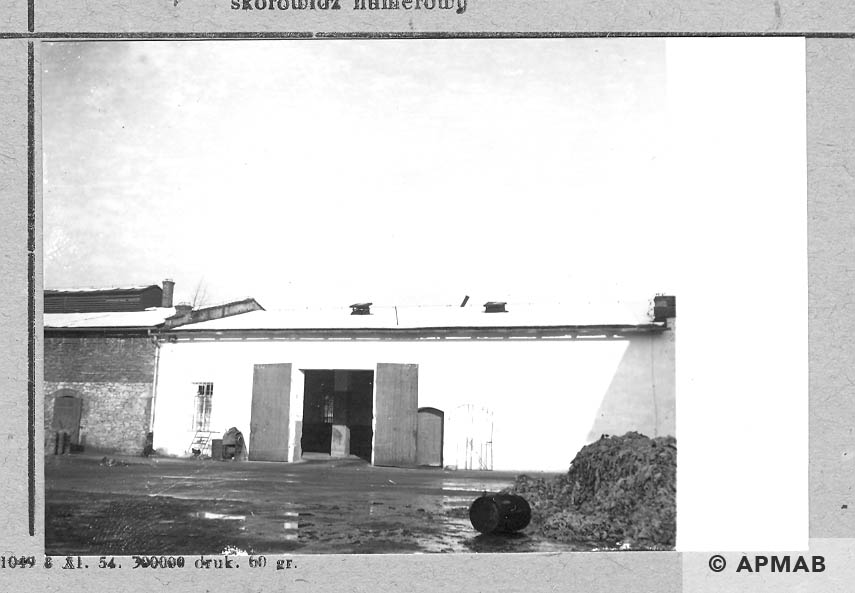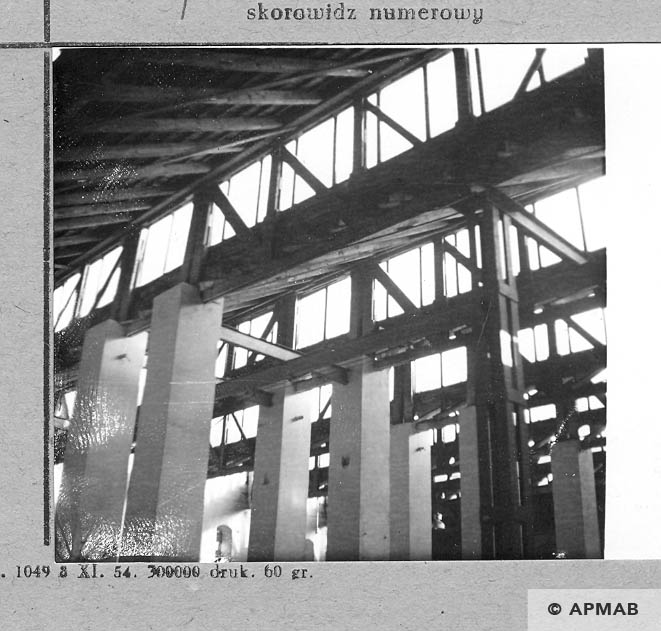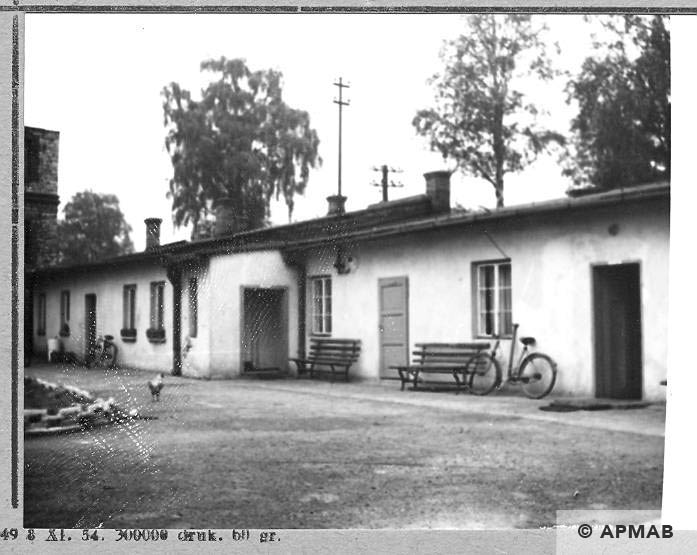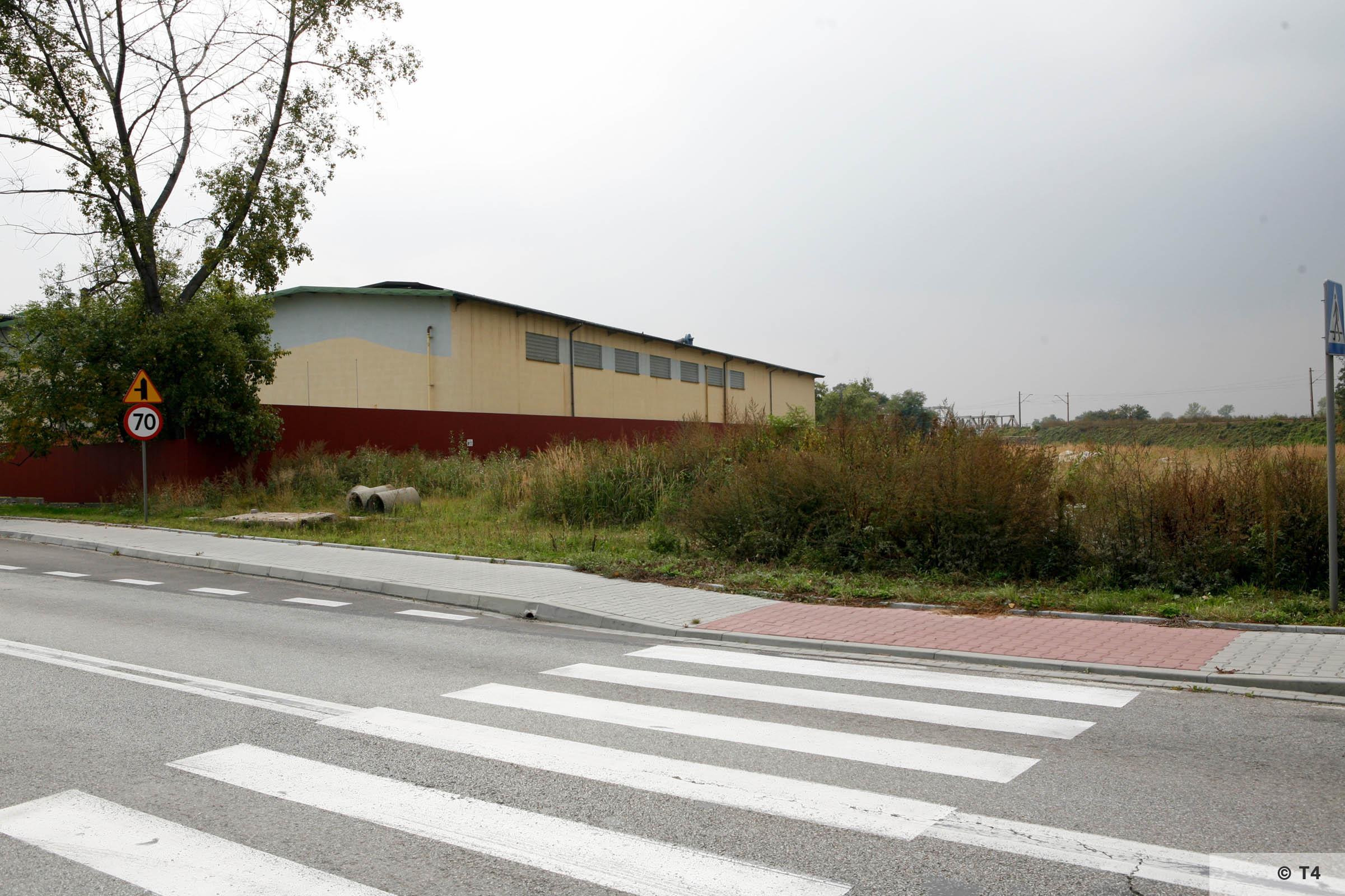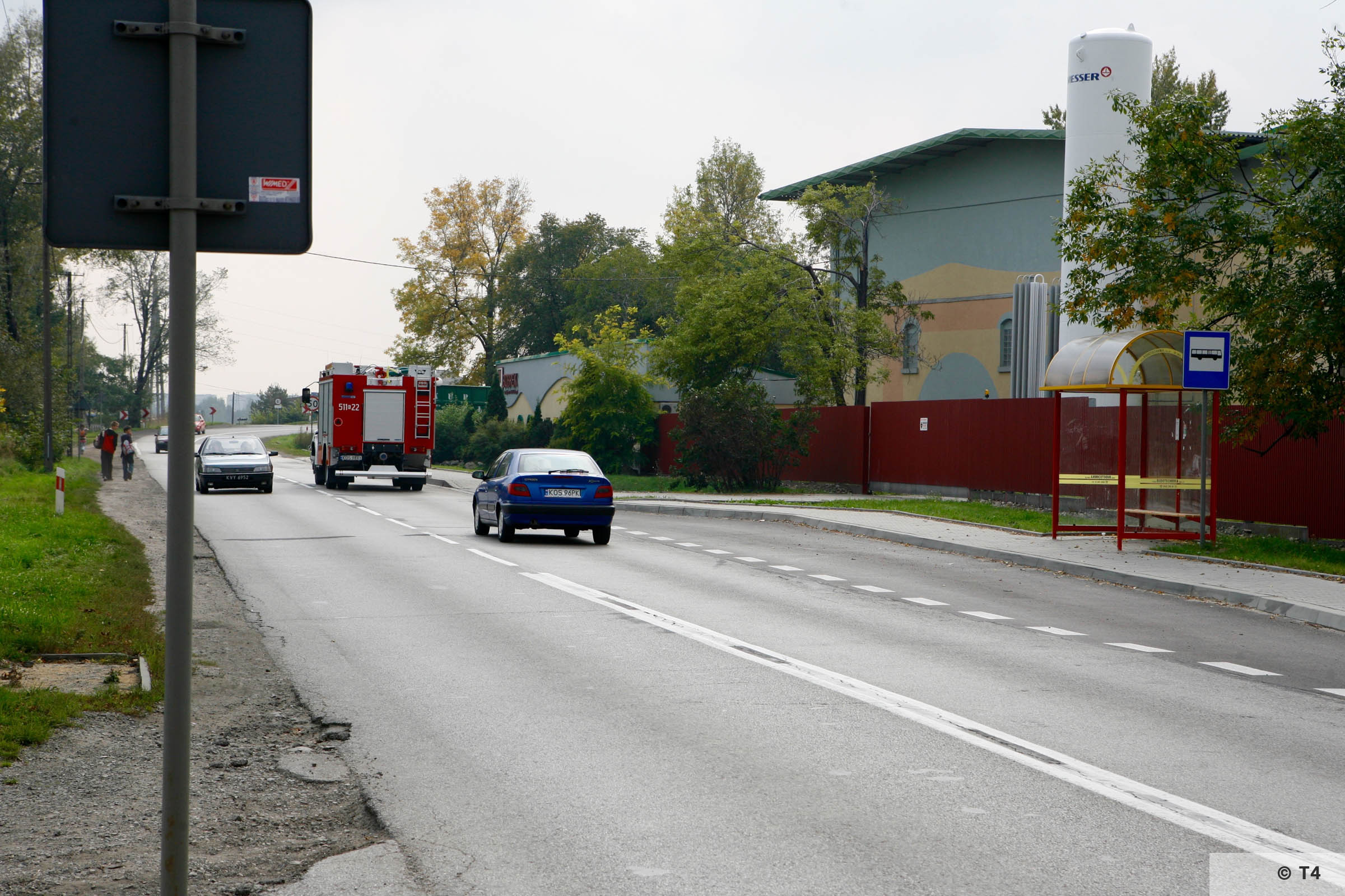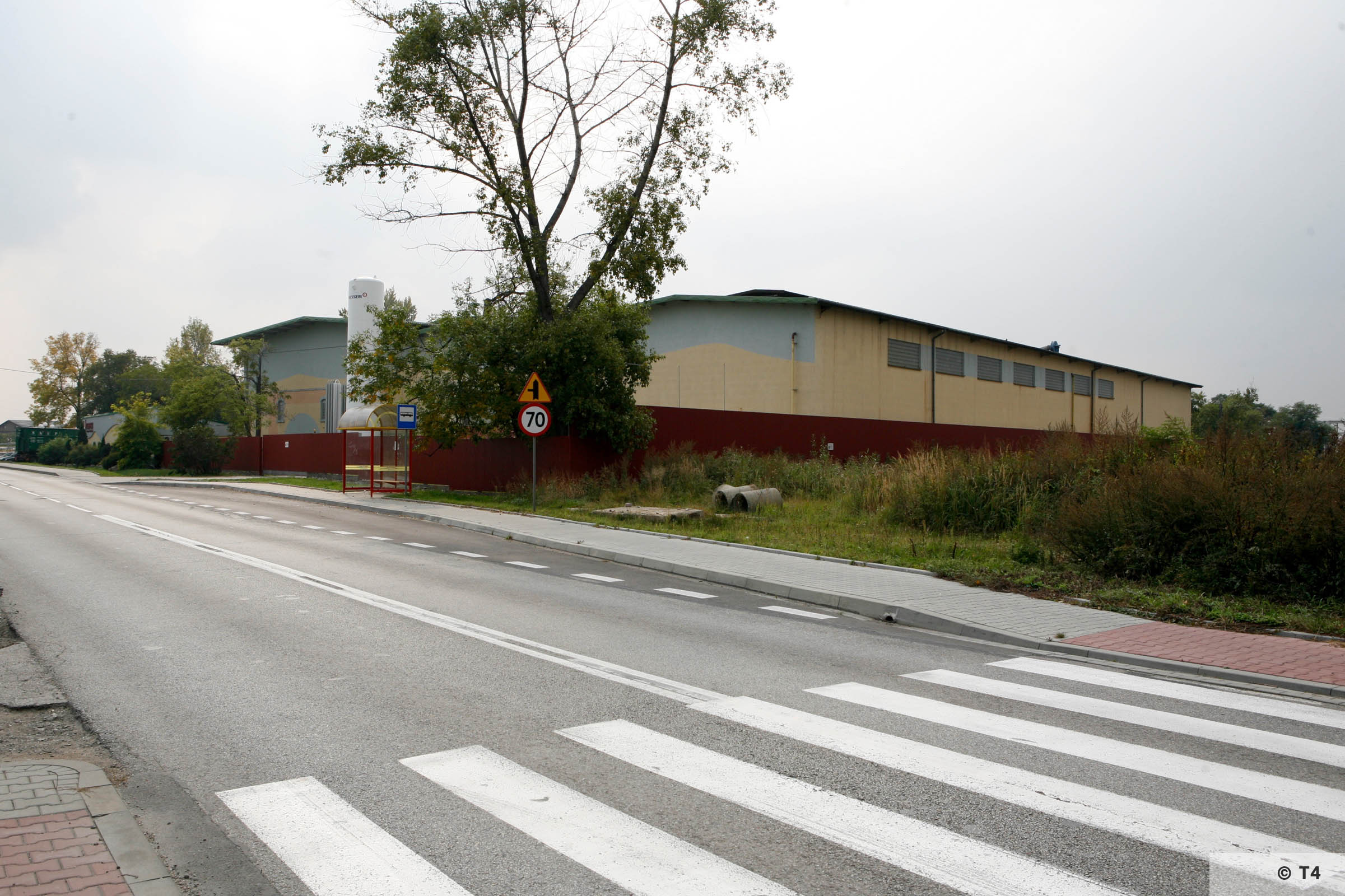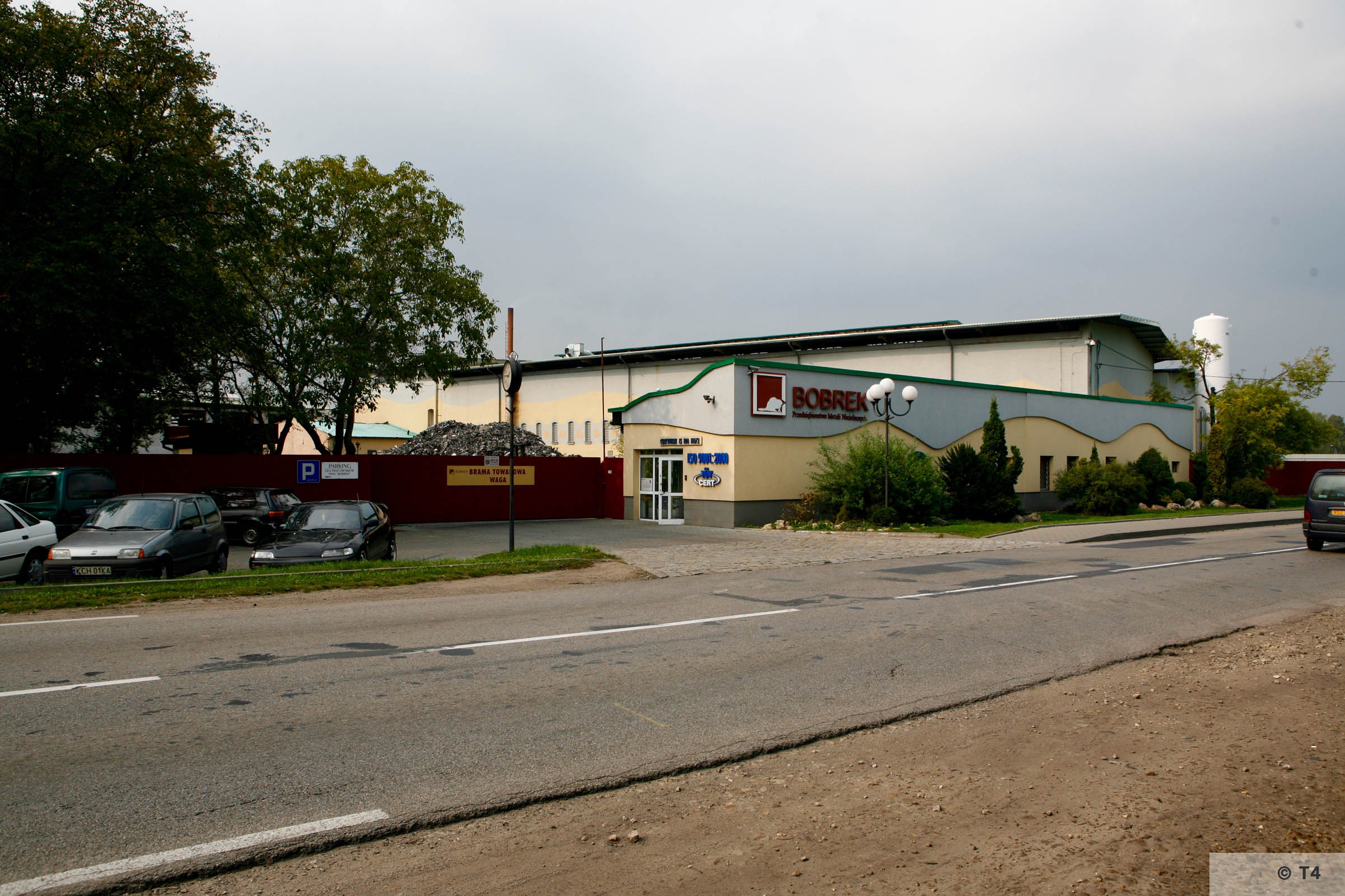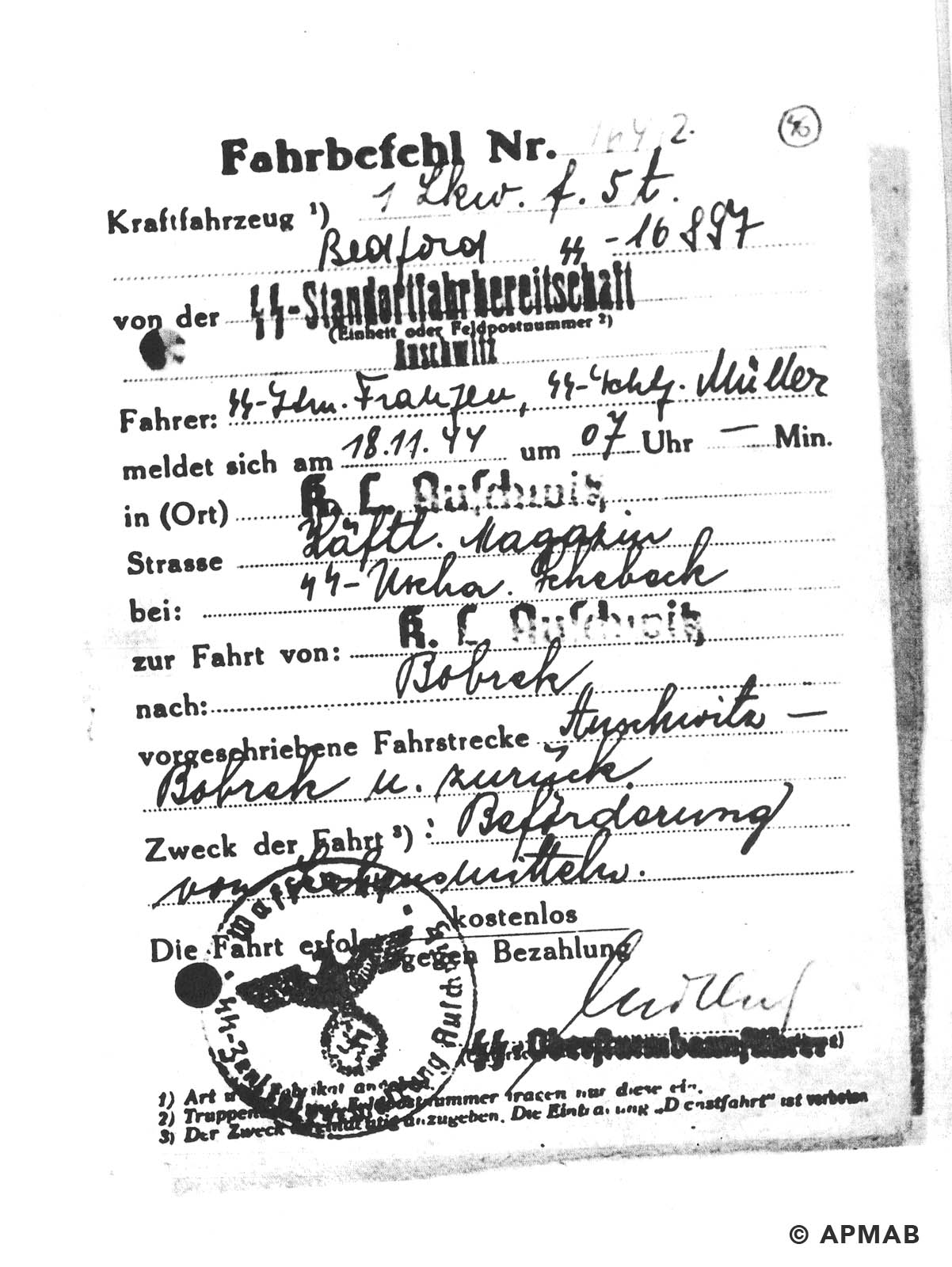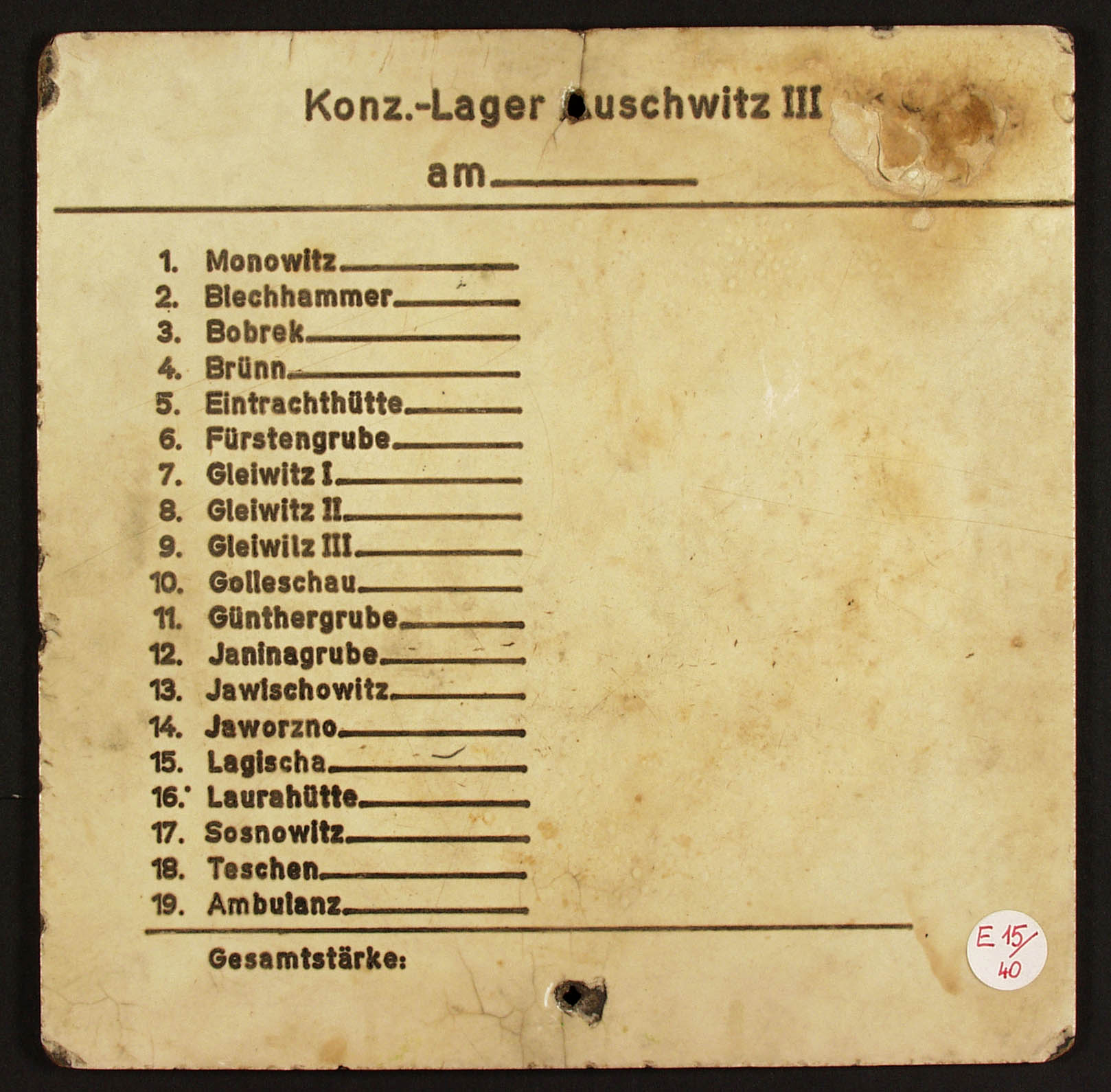Arbeitslager Bobrek
Commandant of the camp
SS-Scharführer Hermann Buch
SS-Oberscharführer Anton Lukoschek
Number of SS Guards
Approximately 20 SS guards from the 3rd Wachkompanie Monowitz. In the summer and autumn of 1944, some of the SS guards were transferred from Bobrek to other camps, and in their place came former Wehrmacht and Luftwaffe men from the 8th Sentry Company Auschwitz.
Work type
Steel Works: Production of electrical equipment for aircraft and submarines.
Employer
Siemens-Schuckertwerke GmbH
Sub camp buildings
Buildings of the surviving fertilizer plant were adapted for the sub camp. It was previously used by a Schmelt forced labour camp for Jews.
Number of prisoners
Between 50 to 213 male prisoners and up to 50 female prisoners.
213 male prisoners on 17 January 1945 and possibly 38 female prisoners.
Nationality of prisoners
Amongst the male prisoners there were 12 Poles and a few Soviets the remainder were Jews of various nationalities. The female prisoners were Jews.
Period of camp existence
May 1944 – 19 January 1945
Dissolution / Evacuation of the sub camp
On 19 January 1945 the prisoners were evacuated to the Auschwitz sub camp Gleiwitz II and later transported to the Altreich.
Dates of site visits by Tiergartenstrasse4 Association
September 2006 and November 2007
Memorialisation
No known memorial.
Explore more
The History
The history of the companies and the places prisoners worked, the sub camps, the SS guards and memorialisation of the sites.
The History of Siemens-Schuckertwerke GmbH
The history of Siemens-Schuckertwerke GmbH is well documented. Siemens have their own Historical Institute who preserve the archives of the company and undertake research, publish books and create exhibitions. The website of the company itself has a large section on the history of Siemens including during the war years. There are also many published works on the history of Siemens itself. [1]
[1] The Siemens website can be found at: https://new.siemens.com/global/en/company/about/history/news/siemens-schuckertwerke.html
The Post War History of the Former Siemens Factory in Bobrek
Siemens abandoned its Bobrek factory in January 1945 in the face of the Red Army advance. We have been unable to date to ascertain what happened to the factory between 1945 and 1998.
In 1998 the site of the former Siemens factory and Auschwitz sub camp was taken over by Przedsiębiorstwo Metali Nieżelaznych BOBREK. The company recycles aluminium and produces cast alloy. It employs 200 workers at the site.[1]
[1] The information was taken from the website of Przedsiębiorstwo Metali Nieżelaznych BOBREK http://www.bobrek.com.pl/historia on August 2, 2019.
The History of the Sub Camp Arbeitslager Bobrek
Bobrek village is located 3.5 km north of Oświęcim, on the road to Chrzanów. Before the war, in addition to a farm, there was a small fertilizer plant there owned by Anna Kuppermann and Ryfka Jakubowicz.
A local resident Emilia Szpytek testified,“After the occupation of Oświęcim and the surrounding area by Nazi troops, the Bobrek fertilizer factory was closed, and custody of it was given to (…) the director of the footwear company in Chełmek a man named Schultz-Bunde. In 1940, all stocks of fertilizer, as well as stocks of raw material in the stock cars were exported to Germany. The factory was deserted (…).” [1]
In the courtyard of the deserted factory a barrage balloon was installed [2], manned by the Luftwaffe. This was one element of an extensive air defense structure to protect the IG Farben factory in Monowice. [3]
In 1941 in Bobrek the Schmelt Organization set up a forced labour camp for 50 Jews both women and men who were employed near Chrzanów and worked on maintenance of the Vistula River, and construction of roads. This camp was closed in February 1943, and the Jewish workers transferred.[4] In 1943 most of the Schmelt camps were transferred together with their forced Jewish labourers directly to the jurisdiction of the Auschwitz and Gross Rosen concentration camps. This for example happened with the Blechhammer camp in Sławięcice near Blachownia Śląska which was transferred to the jurisdiction of the Auschwitz concentration camp. However, there was no such continuity with the camp in Bobrek. The organization Schmelt camp in Bobrek was closed, and the emergence of the sub camp of Auschwitz in the same place resulted from subsequent discussions between the board of Siemens-Schuckertwerke GmbH and the commandant of Auschwitz.[5]
The emergence of the sub camp of Auschwitz in Bobrek was a direct result of the decision of Siemens-Schuckertwerke GmbH, in mid-1943, to move production from Germany to areas not so exposed to the effects of the Allied bombing raids. By the end of the war Siemens had transferred and relocated nearly 400 facilities. Up to this point Siemens had already employed concentration camp prisoners from camps such as Buchenwald, Mauthausen, Flossenbürg, Sachsenhausen, Gross-Rosen and Ravensbrück in production.[6] Given this it was therefore logical that Siemens took the opportunity to utilize available skilled prisoners from the largest concentration camp in Auschwitz-Birkenau.
Kurt Bundzus led the negotiations between Siemens and the commandant of Auschwitz. As the Siemens company representative, Bundzus travelled to Auschwitz twice (in October and December 1943), to discuss and reach agreement on a sub camp at Bobrek in which Auschwitz prisoners would work for Siemens-Schuckertwerke GmbH.[7]
The beginnings of the sub camp Bobrek were described by former prisoner Franciszek Skwara: “During the construction of Mexico I was moved from Block 6 to Block 5 (…). After about a year’s work in this commando about 100 prisoners were selected – me among them, and we were sent to work in Bobrek near Auschwitz. Of these prisoners, only 12 prisoners were Aryans – the rest were Jews of various nationalities. Also deported were some 50 female Jewish prisoners. After the evening roll-call every day they brought us back to Birkenau. Working until the evening in Bobrek and then transportation back to Birkenau afterwards lasted about a month. After this, we remained permanently in Bobrek, in the hall – for which arrived 3 tier bunk beds. The hall was located next to the land where they built a factory. It was a factory of Siemens-Schuckert. What was to be produced in this factory, none of us knew.”[8]
Marian Anyst a former prisoner recalled the early stages of the development of the Bobrek plant and sub camp: “When I first arrived, I saw the Bobrek factory buildings which had been destroyed in the war. We started to take off the roof and to build a new gable roof skylight. Then we cleaned the inside of production facilities, built by the road on the banks of the Vistula. Then we began to repair the building where we lived. It was a store located about 10 meters from the factory. The work started on laying tile floors and knocking down part of the of potato storage sheds in the (…) During the building of the roof of the hall we built 28 concrete pillars to support it. During our work we also had to demolish the old factory chimney, which lay next to three buildings. We were told to demolish the chimney carefully so as not to destroy any of the buildings, otherwise we would be punished. The preparatory work lasted three weeks. The idea was that the chimney would collapse in the direction of the Vistula. The chimney was undermined, and wooden stanchions were placed under it. At the time we were ready to collapse the chimney we started fires, which gradually burned the wooden stanchions, and slowly using ropes attached to the upper part of the chimney we pushed it in the required direction. The chimney had duly fallen. Our work was overseen by a Kommandoführer and 3 German civilians. We received our promised bonus and I bought myself some food. The material from the destroyed chimney we used to build a hut at the gate – a porter´s lodge.” [9]
The refurbished workshop building (map reference 1) and the adaptation of the sub camp building were probably completed in April 1944. Then barracks and storage facilities for the sub camp guards, and office facilities for the SS were built.
The plant and sub camp in Bobrek, built in large part by the prisoners, was close to 2 hectares in size stretching between the road connecting Oświęcim – Chrzanów, the flood embankment on the Vistula River and the railway line running between Oświęcim and Trzebinia. This area was originally surrounded by a wooden fence with barbed wire, which was later hung on concrete posts. There were two gates which led to the camp, which were located along the asphalt road which ran from Oświęcim to Chrzanów. One of the gates located at the porter’s lodge served as the main gate of the camp, while the other was used exclusively for business purposes.
When the fence was built there were no observation towers for the SS guards. It was planned to build guard towers in the autumn of 1944, but this was never implemented. The main building in the sub camp Bobrek was a large, brick building called the ‘factory’ which housed a production plant, workshop, machinery, welding, boiler room and storage (map reference 1). In the middle of the production hall was a grid structure stretched between four pillars which rose towards the roof on which the tools were stored. Every day in the morning, the prisoners took the tools they needed for their days work. In a smaller building adjacent to the hall on the first floor the female prisoners lived (map reference 3). The male prisoners were accommodated in a separate brick building which was located several meters away from the production hall in the north-west corner of the camp (map reference 2). In this building were three rooms: in the largest of them measuring 19 x 14 meters the male prisoners slept. The prisoners slept on wooden bunks, but due to overcrowding, most prisoners had to sleep two to a bunk. The room had eight windows. In a small extension separate from the prisoner’s accommodation, was the prisoner’s kitchen and food warehouse, and also rooms for the Kapos and Blockführer.[10]
The typical life of a prisoner in the sub camp Bobrek was described after the war by former prisoner Marian Anyst, “The room where we lived was dark but warm. We slept on bunks fitted with mattresses and blankets…. The room was lit by a single electric lamp. There were no stools, we sat on our bunks. We got up around 5, after a wash and breakfast, there was a roll-call. These took place in the morning and evening on the square in front of the barracks. The parade ground was in the courtyard and was surrounded by the factory and the fence. The same Kommandoführer led the roll-call. After the evening roll call the gate leading to the parade ground and the entrance gate to the barracks accommodation were locked. We worked all day with an hour for lunch. The food was cooked on the spot and we always ate it in front of the barracks with the exception of rainy days, then we entered the barrack.” [11]
The work performed by the prisoners in Bobrek which did not require great physical effort took place in a large factory type building. It cannot be said it was a comfortable environment, but certainly the work was lighter than, for example, the heavy construction work or farming carried out in other Auschwitz sub camps. The terms and the nature of the work were determined by Siemens-Schuckertwerke GmbH who also set the criteria for the workers that could be employed. Most of the prisoners employed in Bobrek therefore possessed professional qualifications. We know this from a factory management report of 31 October 1944, which showed that among the 217 prisoners were up to 156 skilled workers, such as: operational (31), locksmiths (18), welders (2), electricians (3), roofers and carpenters (15), bricklayers (15), workers involved in hardening steel (4), metal workers (13), workers controlling equipment (20) and other. [12]
Every day the prisoners were given their tools and materials, with which they performed various and complex tasks, most of which had to be done very precisely. These included: mechanisms for electric motors, switches, electrical elements for aircraft and submarines. In order to ensure the required precision was achieved the prisoners were supervised by civilian employees from Siemens. In addition to the men who worked in the production hall dozens of female prisoners worked on machines for the production of wrenches. [13]
The research work of Dr Piotr Setkiewicz of the Auschwitz-Birkenau State Museum reveals that in the Bobrek sub camp there were approximately 220 male prisoners and 37 female prisoners. The prisoner count at 30 December 1944 for female prisoners includes only 1 female prisoner in Bobrek. Whether the female prisoners had alreday been returned to Auschwitz-Birkenau is unknown. Usually, however, there were fewer prisoners – about a few dozen. They were mostly Jewish prisoners, who constituted about 90% of all prisoners. The remaining 10% were Poles and a few Soviets. [14]
[1] APMAB. Zespół Oświadczenia, testimony of witness Emilia Szpytek, Vol. 51, p. 116.
[2] Barrage Balloon – unmanned, tethered balloon, held up with steel cables acting as an obstacle to low flying planes. Barrage balloons were used to shield important strategic areas, such as the bombing of cities, railway junctions, and munitions factories. Barrage balloons were used on a large scale in the air defense of London during the Battle of Britain.
[3] See: APMAB. Zespół Oświadczenia, testimony of witness Andrzej Bożek, Vol. 51, p. 137; and Piotr Setkiewicz, Podobóz Bobrek, [in:] Zeszyty Oświęcimskie 2002 Nr 23, p. 29-30.
[4] See: Vorläufiges Verzeichnis der Konzentrationslager und deren Außenkommmandos sowie anderer Haftstätten unter dem Reichsführer-SS in Deutschland und deutsch besetzten Gebieten (1933-1945), Comité International de la Croix-Rouge, International Tracing Service, Arolsen 1969; Verzeichnis der haftstätten unter dem Reichsführer-SS. Konzentrationslager und deren Außenkommmandos sowie anderer Haftstätten unter dem Reichsführer-SS in Deutschland und deutsch besetzten Gebieten (1933-1945), Comité International de la Croix-Rouge, International Tracing Service, Arolsen 1979 and Obozy hitlerowskie na ziemiach polskich 1939-1945. Informator encyklopedyczny, Warszawa 1979, p. 109.
[5] Setkiewicz, Piotr, Podobóz Bobrek, [in:] Zeszyty Oświęcimskie [2002] Nr 23, p. 30.
[6] Ferencz, Benjamin, Less than slaves: Jewish forced labor and the quest for compensation, Indiana 2002, p. 123-125.
[7] Setkiewicz, Piotr, Podobóz Bobrek, [in:] Zeszyty Oświęcimskie [2002] Nr 23, p. 29-51.
[8] APMAB. Zespół Oświadczenia, testimony of former prisoner Franciszek Skwara, Vol. 48, p. 147.
[9] APMAB. Zespół Oświadczenia, testimony of former prisoner Marian Anyst, Vol. 55. p. 98-99.
[10] APMAB. Microfilm No 1867. CHIDK. Collection 502-1-159, p. 76.-77. Plan “Siemens-Schuckertwerke A.G. – Betrieb Auschwitz. Umbau des Unterkunftsgebäudes und Neubau des Lagerhauses”, from 14 January 1944.
[11] APMAB. Zespół Oświadczenia, testimony of former prisoner Marian Anyst, Vol. 55. p. 99.
[12] APMAB. Microfilm 1900. CHIDK collection 502-1-19, p. 312.
[13] Setkiewicz, Piotr, Podobóz Bobrek, [in:] Zeszyty Oświęcimskie [2002] Nr 23, p. 39.
[14] Setkiewicz, Piotr, Podobóz Bobrek, [in:] Zeszyty Oświęcimskie [2002] Nr 23, p. 41-43.
Literature:
Setkiewicz, Piotr, Podobóz Bobrek, [in:] Zeszyty Oświęcimskie [2002] Nr 23, p. 29-51.
The SS Guard Unit
At the time of the creation of Auschwitz Aussenkommando 133-B, whose task was to build a sub camp in Bobrek, more than a dozen SS men were responsible for escorting the prisoners from Auschwitz-Birkenau to Bobrek and back in the evening. The Kommandoführer of this Aussenkommando was SS-Unterscharfiihrer Hermann Buch. After the creation of the sub camp SS-Oberscharführer Anton Lukoschek, transferred from Auschwitz III- Monowitz became the Lagerführer. Lukoschek remained Lagerführer until the camp was dissolved in January 1945. During the existence of the Aussenkommando Bobrek that went daily from Auschwitz-Birkenau to Bobrek, the behaviour of the SS guards was extremely brutal. After the creation of the sub camp the attitude of the SS changed. This probably resulted from the order of 1944 from the commandant of Auschwitz III-Monowitz SS-Hauptsturmführer Heinrich Schwarz, that there should be no mistreatment of prisoners, which would prevent them from working.[1]
The guard unit was made up of approximately 20 SS men. [2] In the summer and autumn of 1944, some of these SS guards were transferred from Bobrek to other camps, and in their place came young reservists and former Wehrmacht soldiers drafted into the SS. They were older soldiers who wanted to see out the war, and obey only those orders that they had to. Thus the treatment of prisoners improved even further. Quite often the prisoners were allowed to go to nearby villages to collect eggs, milk and other foodstuffs. [3]
[1] APMAB. Kommandanturbefehl Monowitz No 4/44 from 22 February 1944.
[2] Rudorff, Andrea, Bobrek [in:] Des Ort des Terrors Band 5, Geschichte der Nationalsozialistischen Konzentrationslager. C.H.Beck 2007, p 193.
[3] APMAB. Zespół Oświadczenia, testimony of witness Józef Buchta, Vol. 51, p. 140.
Literature:
Setkiewicz, Piotr, Podobóz Bobrek, [in:] Zeszyty Oświęcimskie [2002] Nr 23, p. 29-51.
The SS Guards
References:
Rudorff, Andrea, Bobrek [in:] Des Ort des Terrors Band 5, Geschichte der Nationalsozialistischen Konzentrationslager. C.H.Beck 2007.p 194.
BA Ludwigsburg B162/2680 and B162/2679.
Zppw-auschwitz.pl Zwiazek Polaków Pomordowanych w Auschwitz. List of 8500 SS men in KL Auschwitz.
IPN database of Auschwitz SS guards. https://truthaboutcamps.eu/th/form/60,Zaloga-SS-KL-Auschwitz.html
Setkiewicz, Piotr, Podobóz Bobrek, [in:] Zeszyty Oświęcimskie [2002] Nr 23, p. 29-51.
The Evacuation of the Sub Camp Arbeitslager Bobrek
The evacuation of the sub camp Bobrek took place over several months. Some of the prisoners were transported back in the autumn of 1944 to Monowitz.[1] The rest of the prisoners remained in Bobrek until mid-January 1945. On 17 January the remaining prisoners were gathered in the roll-call square, where they were told they would be the evacuated. The prisoners were given bread and formed into columns. In the afternoon, at approximately 15.00 hrs Lagerführer Lukoschek fired a shot from his pistol into the air, signifying to the prisoners to march out of the camp. After a short march they arrived at Monowitz, where the Bobrek prisoners joined other columns of prisoners leaving the Auschwitz complex. A column, among whom were prisoners from Bobrek, passed through Oświęcim, Bieruń and Mikołów where a stop was ordered.
The next day, the prisoners reached the deserted barracks of the Gleiwitz II sub camp where they spent 24 hours. They were then escorted to the railway station, where four thousand prisoners were loaded onto railway carriages and transported to the Buchenwald concentration camp. When the prisoners were being loaded into railroad cars, an air raid siren went off and the station lights were turned off. In the confusion several prisoners, including a former prisoner of the sub-camp Bobrek – Piotr Stypuła, managed to escape. However, most of the escapees were shot.
The evacuation train passed through Knurów, Rybnik, Bogumin, Ostrava, Pardubice and Prague. During the journey through Czechoslovakia the prisoners were only once issued with food – about half a litre of soup. The transport was directed to the Buchenwald concentration camp, where prisoners including those from the sub camp Bobrek were transferred a few days later to other camps.
[1] APMAB. Zespół Oświadczenia, testimony of former prisoner Marian Anyst, Vol. 55, p. 100.
Literature:
Setkiewicz, Piotr, Podobóz Bobrek, [in:] Zeszyty Oświęcimskie [2002] Nr 23, p. 29-51.
The Post War History of the Former Sub Camp Arbeitslager Bobrek
We have been unable to date to ascertain what happened to the factory between 1945 and 1998. In 1998 the site of the former Siemens factory and Auschwitz sub camp was taken over by Przedsiębiorstwo Metali Nieżelaznych BOBREK.
The Preservation Status of the Former Sub Camp Arbeitslager Bobrek
The remnants of the buildings of the former sub camp Bobrek are located in the village of the same name located near Oświęcim. Driving from Oświęcim in the direction of Chrzanów along ul Krakowska, after crossing the bridge over the Vistula on the right, you can see a residential building in which the offices and administrative facilities of the Bobrek sub camp were located (map reference 6). In front of this building there is a transformer building (map reference 7) that generated electricity for the Bobrek sub camp, and the Siemens plant located there.
Driving a further 100 m northwards, on the left there is a processing plant for non-ferrous metals. It was here that the Arbeitslager Bobrek was established. At the beginning of the “Refinding the Sub Camps of Auschwitz” project and understanding the potential difficulties in gaining access to the sites of sub camps and places prisoners worked we organized a letter of introduction from the Auschwitz-Birkenau State Museum. Unfortunately, the owner of the Bobrek site Przedsiębiorstwo Metali Nieżelaznych BOBREK refused Tiergartenstrasse4Association permission to visit the site. However, our observations from outside the plant and the use of archival photographs allowed us to confirm two original buildings related to the sub camp. At the road, to the right of the main entrance gate to the plant is an oblong, one story building that served as the guard house (map reference 5). It is today largely rebuilt and modernized, but the location and comparison with archival photographs leaves us in no doubt as to its originality. Just behind this, there is the large building of the factory hall (map reference 1), that the sub camp prisoners rebuilt and worked in. It has also been modernized. Apart from these two buildings, most probably there are no other surviving elements of the camp and plant.
Memorialisation
There is no plaque or monument commemorating the martyrdom of prisoners in the former sub camp at the factory or in the local vicinity of Bobrek.
On the 70th anniversary of the liberation of Auschwitz in January 2015 Siemens honoured the concentration camp prisoners including those from the sub camp of Bobrek that Siemens had used as forced labourers:
“Auschwitz liberated 70 years ago today: Siemens remembers the victims of National Socialism: The world is today commemorating and honouring the victims of National Socialism. Seventy years ago, on January 27, 1945, the Auschwitz and Auschwitz-Birkenau concentration camps were liberated by Soviet troops. From 1943 to 1945, Siemens-Schuckertwerke AG operated a machine tool production facility in the Bobrek camp near Auschwitz. About 200 of the camp’s prisoners worked at the facility. Siemens is known to have employed a total of at least 80,000 forced labourers in the war years of 1940 to 1945. At least 5,000 of these laborers were prisoners from concentration camps – primarily from the Ravensbrück, Auschwitz-Bobrek, Flossenbürg, Buchenwald and Gross-Rosen camps.
The management and employees of the company today profoundly regret that Siemens employed people against their will at the time when the company was integrated into the war economy of the National Socialist regime of injustice. Siemens has acknowledged its responsibility by contributing a total of more than €150 million to the Jewish Claims Conference (1962), the Siemens Humanitarian Relief Fund for Former Forced Labourers (HHZ) (1998-2000) and the German Industry Foundation Initiative „Remembrance, Responsibility and Future.“
As a further acknowledgement of its responsibility, Siemens cooperates closely with the Ravensbrück Memorial and fosters selected projects that aim to clarify and document the events of that time. At its Annual Shareholders‘ Meeting in Munich’s Olympiahalle on January 27, 2015, Siemens is commemorating the day with an exhibit of historical documents from its archives in the hall’s foyer.” [1]
[1] Information taken from the Siemens website on 1 August 1, 2019 https://press.siemens.com/global/en/pressrelease/auschwitz-liberated-70-years-ago-today-siemens-remembers-victims-national-socialism?content[]=Corp
Auschwitz-Birkenau State Museum Site Visit
The Auschwitz-Birkenau State Museum visited the former Arbeitslager Bobrek sub camp and Siemens factory on 19 November 1966. They took fourteen photographs. At the time of their visit the area was unused but most of the buildings still existed:
- The bath and latrine building had been destroyed leaving only one of the supporting walls,
- The main workshop where the prisoners worked was still intact including the glass roof and the 28 concrete pillars built by the prisoners to support it (map reference 1),
- The boiler house still existed as at the time of the sub camp (map reference 4),
- The main entrance gate to the camp and the guard house were also intact (map reference 5),
- The building in which male prisoners slept was intact (map reference 2),
- The building in which female prisoners slept was intact (map reference 3).
Other Photographs / Site Visits
Before and during the existence of the sub camp in Bobrek a series of photographs were taken, probably by a Siemens employee. These show the Siemens plant and concentration camp prisoners at work. These photographs are extremely rare. Of the 45 sub camps of Auschwitz, contemporary photographs only survive of prisoners in Monowitz, Wirtschaftsthof Raisko, Wirtschaftshof Budy, Tschechowitz-Bombensucherkommando, Brünn, Arbeitslager Golleschau and Arbeitslager Fürstengrube. There are 18 photographs of Bobrek:
- Photographs references 95270, 95272, 95273, 95279, 95280, 95282, 95286, 31796, 84416 show prisoners at work in the main workshop (map reference 1),
- Photograph reference 95287 probably shows a Siemens civilian worker leaning out of a window,
- Photograph reference 95285 shows the beautifully manicured lawns and flower beds between the front of the main workshop building and the guard house/entrance gate,
- Photograph reference 95283 shows the main factory building before redevelopment, possibly having just being taken over by Siemens,
- Photograph reference 95284 shows the transformer station,
- Photograph reference 95277 shows a view of the fertilizer plant possibly from before the war,
- Photograph reference 95276 shows the main entrance and guard post with a guard in uniform (possibly an SS man). The guard is speaking to somebody through the guard room window,
- Photograph reference 92575 is a view of the plant from the road,
- Photograph reference 95271 shows a house or shop or office building,
- Photograph 95274 shows the chimney of the old fertiliser plant being demolished.

